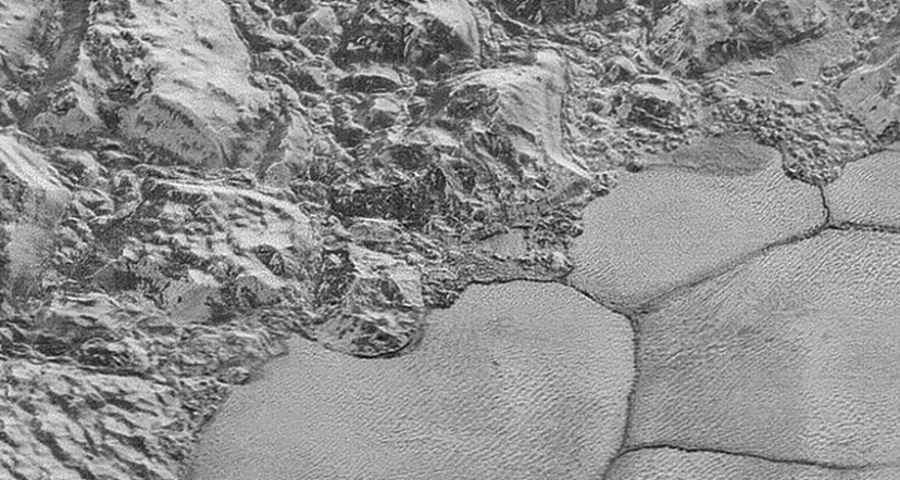Methane dunes spotted on Pluto
The findings come from analysis of the imageow uploaded by NASA’s New Horizons mission, whichora approached Pluto in July 2015. Until now, Pluto’s atmosphere was thought to be too thin for the surface to develop features known from Earth’s deserts.
In a paper published on „Science”, scientists explain how they studied the images rowniny known as Sputnik Planitia, whichorej parts are covered by fields that look like dunes. These lie in the vicinity of the g-bandor of the Al-Idrisi Montes ice caps, whichore have heights as high as five kilometersow.
Scientists analyzing the transmitted data deduced that the dunes are 0.4-1 kilometers apart and consist of methane ice particles 200-300 micrometers in diameteroin – about the size of grains of sand.
– We can’t see the individual grains, but we are able to identify the dunes and characterize their basic physical parameters and the density of the atmosphere, in which theowhere they formed. We can roAlso measure their distance from each other and estimate the wind speedsow, whichore forming them. Based on these data, we can estimate the size of the methane ice particles – said study leader Matt Telfer of the University of Plymouth.
The dunes need an atmosphere dense enough to allow methane particles to be transported by wind and mechanism, ktory lifts particles off the ground. At first glance, it seems that none of these conditionsow are not met on Pluto. But Telfer and his coohe researchers calculated that the dunes may be located in one of the windiest regions of theow Pluto, where wind gusts can reach up to 10 m/s. These winds are generated by the movement of air flowing from neighboring gor.
Researchers believe that the dunes are composed of frozen methane particles. Perhaps the roalso of nitrogen. In addition, significant amounts of methane can be found in the already mentioned ice gorach.
Computer simulations suggest that despite Pluto’s thin atmosphere, these winds are strong enough to carry methane ice particles over considerable distances. The researchers suggest that this is helped by the process of sublimation, in which theorym solids turn directly into gas.
Slight warming by the distant sun’s rays raises the temperature above the freezing point of nitrogen – minus 230 st. Celsius. Scientists believe that with this warming, methane crystals should allow nitrogen ice to sublimate.
– This is really exciting moc look at this world and recognize that it is not just a frozen, icy globe on the outer edges of the solar system, but actually a dynamic world, ktory is still changing, still shaping – Telfer pointed out.
In mid-July 2015, the New Horizons probe flew past Pluto at a distance of about 12,500 kilometersow. During that flight, it took hundreds of images of the planet and its moon Charon. Pluto lost its status as a planet in 2006. By the decision of the International Astronomical Union, it is now a dwarf planet.
The New Horizons probe was launched into space in January 2006. Its purpose was to make measurementsow and exploration of Pluto and its moonow. This goal has already been achieved. The second of the goalsow is to investigate one of the objectsoIn located in the Kuiper Belt called 2014 MU69.
The end of the mission is scheduled for June 2022, but if the probe is in good condition, the mission may continue. This has happened in many cases. Opportunity rover was supposed to stay on Mars for three months, and it is now 13 years. Not to mention the Voyager 1 and Voyager 2 probes, whichore were to explore Jupiter and Saturn, and are now the most distant and still operational object sent into space by man.
